Andover Controls LCX 890 Installation Guide

LCX 890 Series Controller
Installation Guide
Andover Controls Corporation |
i |
Downloaded from - http://www.guardianalarms.net
Version D
Reproduction or distribution forbidden.
Copyright © 1997 by Andover Controls.
Subject to change without notice.
Order No. 30-3001-285
Copyright © 1997
Andover Controls Corporation
300 Brickstone Square
Andover, Massachusetts 01810
All Rights Reserved.
Published by the Engineering Department at Andover Controls Corporation.
IMPORTANT NOTICE
This product is subject to change without notice. This document does not constitute any warranty, express or implied. Andover Controls Corporation reserves the right to alter capabilities, performance, and presentation of this product at any time.
ii |
LCX 890 Installation Guide |
Preface
The LCX 890 Series Controller Installation Guide presents instructions for installing the LCX 890 series controllers on an Infinet. It first presents site preparation information and then step-by-step installation instructions.
For information on programming, refer to the Infinity Controller Programmer’s Guide or the ICS Controller Programmer’s Guide.
Andover Controls Corporation |
iii |
iv |
LCX 890 Installation Guide |
Contents
Setting Up an LCX 890 Series Controller |
|
and Infinet |
|
Site/System Setup Requirements ............................................................. |
2 |
Controller Dimensions and Weight ............................................... |
3 |
Power Requirements ...................................................................... |
3 |
Cable Limitations ........................................................................... |
3 |
Lightning Protection ...................................................................... |
4 |
Building Ground Requirements ..................................................... |
4 |
Inspecting the Ground .................................................................... |
5 |
Environmental Requirements ........................................................ |
6 |
Output Requirements ..................................................................... |
6 |
Input Requirements ........................................................................ |
7 |
Laying Out the Site Setup ............................................................ |
12 |
Installing LCX 890 Series Controllers ................................................... |
13 |
Unpacking .................................................................................... |
13 |
Parts Required .............................................................................. |
13 |
Mounting ...................................................................................... |
13 |
Finding the Connection Ports on the LCX 890 ........................... |
17 |
Finding the Connection Ports on the LCX 898 ........................... |
19 |
Connecting the AC Power ........................................................... |
21 |
Selecting the AC Input Voltage ................................................... |
22 |
Wiring the Infinet to the LCX 890/898 ....................................... |
23 |
Wiring the Infinet to the 9000 Controller .................................... |
24 |
Locating the Inputs on an LCX 890 ............................................ |
25 |
Locating the Inputs on an LCX 898 ............................................ |
27 |
Wiring the Inputs ......................................................................... |
30 |
Attaching the Output Relays ........................................................ |
34 |
Andover Controls Corporation |
v |
Locating/Wiring the Momentary Switches .................................. |
38 |
Connecting the EMX 170 or SP 100 Module |
|
to the EMX 170 or SP 100 Port .................................................... |
52 |
Powering Up the LCX 890 or 898 ......................................................... |
53 |
Connecting the Battery ................................................................ |
54 |
Reset Button ................................................................................. |
54 |
Connecting the Andover Controls Service Tool .......................... |
54 |
vi |
LCX 890 Installation Guide |
Figures
Figure 1. Dimensions to Knockouts for Mounting the LCX 890 ........... |
15 |
Figure 2. Dimensions to Knockouts for Mounting the LCX 898 ........... |
16 |
Figure 3. Locations of Connection Ports on the LCX 890 ...................... |
18 |
Figure 4. Locations of Connection Ports on the LCX 898...................... |
20 |
Figure 5. Metal Plate and Screw for Power Supply Wire ....................... |
21 |
Figure 6. Infinet Cable Wiring ................................................................ |
23 |
Figure 7. Attaching the Infinet Cable to the 9000 Controller ................. |
24 |
Figure 8. Location of Inputs, Outputs, and Momentary Switches |
|
on the LCX 890 .................................................................... |
26 |
Figure 9. Location of Inputs, Outputs, and Momentary Switches |
|
on the LCX 898.................................................................... |
28 |
Figure 10. Wiring Diagram for a Digital (Switch) Input ........................ |
31 |
Figure 11. Wiring Diagram for Thermistor Input ................................... |
32 |
Figure 12. Wiring Diagram for Voltage Input ........................................ |
32 |
Figure 13. Wiring Diagram for Current Input ......................................... |
33 |
Figure 14. Inserting a Relay for an Output on LCX 890 or Right |
|
Side of LCX 898 .................................................................. |
35 |
Figure 15. Inserting a Relay for an Output on the Left Side of the |
|
LCX 898 ............................................................................... |
35 |
Figure 16. Appearance, Positioning, and Numbering |
|
of Output Relays on LCX 890 ............................................. |
36 |
Figure 17. Appearance, Positioning, and Numbering of Output |
|
Relays on LCX 898 .............................................................. |
37 |
Figure 18. Illustration of Wiring Lights to Output Relays ...................... |
38 |
Figure 19. Location of Momentary Switch and Its |
|
Associated Outputs on the LCX 890 .................................... |
39 |
Figure 20. Location of Momentary Switches and Their Associated |
|
Outputs on the LCX 898 ...................................................... |
40 |
Andover Controls Corporation |
vii |
Figure 21. Wiring Diagram for Four-Wire Momentary Switch .............. |
42 |
|
Figure 22. Wiring Diagram for Three-Wire Momentary Switch ............ |
43 |
|
Figure 23. Wiring Diagram for Four-Wire Momentary Switch |
|
|
|
Controlling Two Adjacent Outputs ...................................... |
45 |
Figure 24. Wiring Diagram for Four-Wire Momentary Switch |
|
|
|
Controlling Three Adjacent Outputs (LCX 898 Only) ......... |
46 |
Figure 25. |
Wiring Diagram for Four-Wire Momentary Switch |
|
|
Controlling Four Adjacent Outputs (LCX 898 Only) .......... |
47 |
Figure 26. Wiring Diagram for Occupancy Sensor ................................ |
49 |
|
Figure 27. |
Wiring Diagram for Occupancy Sensor Controlling |
|
|
Two Adjacent Output ............................................................ |
50 |
Figure 28. |
Wiring Diagram for Occupancy Sensor Controlling |
|
|
ON/OFF and HI/LO Outputs ................................................ |
51 |
viii |
LCX 890 Installation Guide |
Tables
Table 1. Wire Gauges and Corresponding Maximum Runs for Sensing |
|
|
|
Temperatures Up to 70 ×F ..................................................... |
9 |
Table 2. Wire Gauges and Corresponding Maximum Runs for Sensing |
|
|
|
Temperatures Up to 100 ×F ................................................... |
9 |
Table 3. Wire Gauges and Corresponding Maximum Runs for Sensing |
|
|
|
Temperatures Up to 150 ×F ................................................. |
10 |
Table 4. Wire Gauges and Corresponding Maximum Runs for Sensing |
|
|
|
Temperatures Up to 21 ×C ................................................... |
10 |
Table 5. |
Wire Gauges and Corresponding Maximum Runs for Sensing |
|
|
Temperatures Up to 38 ×C ................................................... |
11 |
Table 6. |
Wire Gauges and Corresponding Maximum Runs for Sensing |
|
|
Temperatures Up to 65 ×C ................................................... |
11 |
Table 7. |
Connecting Jumpers for AC Input Voltages ............................. |
22 |
Table 8. |
Lengths of Wire Required for Wiring |
|
|
Adjacent Outputs to the Same Switch .................................. |
47 |
Andover Controls Corporation |
ix |
x |
LCX 890 Installation Guide |
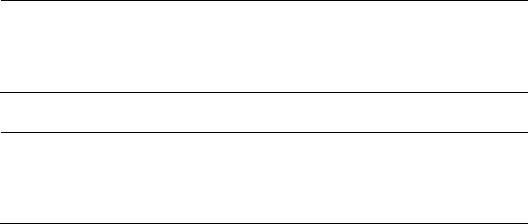
Setting Up an LCX 890 Series
Controller and Infinet
The LCX 890 family of controllers are lighting controllers, designed to connect to lights and switches that control those lights. You can have up to 24 relays for controlling lights, with or without the status feedback option on an LCX 890 and up to 48 relays on an LCX 898. Each output can have a momentary switch, such as a motion sensor or other occupancy sensor, that sends a command to the light.
You may also connect an EMX 170 or SP 100 SmartSensor module to any LCX 890 series controller.
This manual covers the following:
•Site/System Setup Requirements
•Installing the LCX 890 or 898
•Powering Up the LCX 890 or 898
Warranty Registration
Your warranty is effective for 18 months starting on the date the system is shipped.
Warning
All wiring and installations must comply with local, state, and national electrical codes.
LCX 890 Installation Guide |
1 |
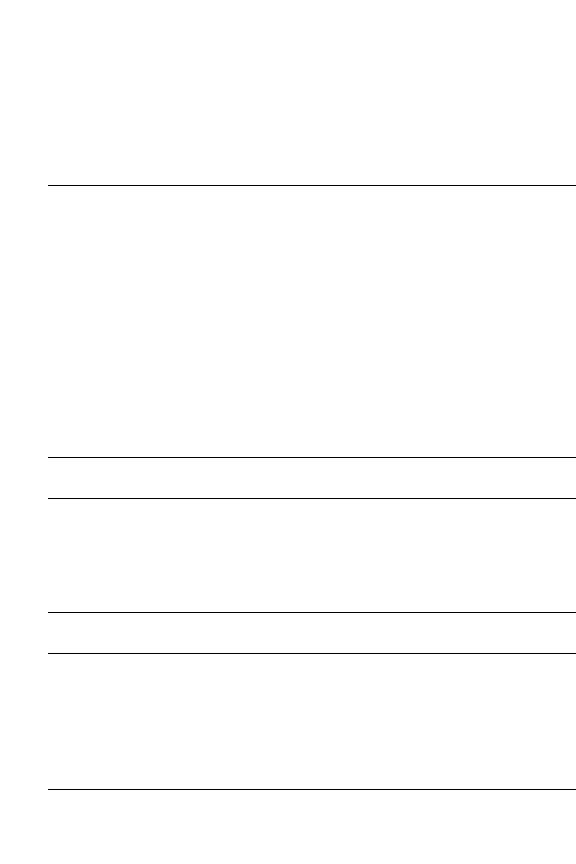
Site/System Setup Requirements
Before you proceed to install the system, you should map out where you plan to install each controller, terminal/workstation, and modem. When planning the sites, be aware of any electrical interference that may occur. You also need to be aware of cabinet dimensions, power requirements, cable limitations, and environmental requirements.
Note
This equipment has been tested and found to comply with the limits for a Class A digital device, pursuant to Part 15 of the FCC Rules. These limits are designed to provide reasonable protection against harmful interference when the equipment is operated in a commercial environment. This equipment generates, uses, and can radiate radio frequency energy and, if not installed and used in accordance with the instructions in this manual, may cause harmful interference to radio communications. Operation of this equipment in a residential area is likely to cause harmful interference in which case the user will be required to correct the interference at his own expense.
Note
This digital apparatus does not exceed the Class A limits for radio noise emissions from digital apparatus set out in the Radio Interference Regulations of the Canadian Department of Communications.
Avis
Le présent appareil numérique n’émet pas de bruits radioélectriques dépassant les limites applicables aux appareils numériques de la class A prescrites dans le Règlement sur le brouillage radioélectrique édicté par le ministère des Communications du Canada.
2 |
LCX 890 Installation Guide |

Controller Dimensions and Weight
Each LCX 890 is 34.9H × 18.3W × 4.67D in. (886.46H × 464.82W × 118.62D mm) and weighs 38 lbs (14.17 kg) without relays.
Each LCX 898 is 38.8H × 27.35W × 4.67D in. (985.52H × 694.69W × 118.62D mm) and weighs 42 lbs (23.49 kg) without relays.
Power Requirements
Caution
Any LCX 890 should receive power from its own independent, unswitched circuit.
You can select an AC line voltage of 115 V, 230 V, or 277 V. You receive the controller set to 115 V. Instructions for selecting the AC line voltage you want are included with the installation.
Voltages you can select are as follows (each uses a 2 A slow blow fuse):
•115 VAC +/– 10% 50/60 Hz
•230 VAC +/– 10% 50/60 Hz
•277 VAC +/– 10% 50/60 Hz
Each LCX 890 series controller consumes 115 VA of power.
Cable Limitations
The maximum cable length for all buses is 4,000 ft (1219 m) at 19,200 baud (up to 32 Infinet controllers). You can extend buses beyond 4,000 ft (1219 m) or put more than 32 Infinet controllers on less than 4,000 ft (1219 m) by using the InfiLink 200 amplification module.
LCX 890 Installation Guide |
3 |
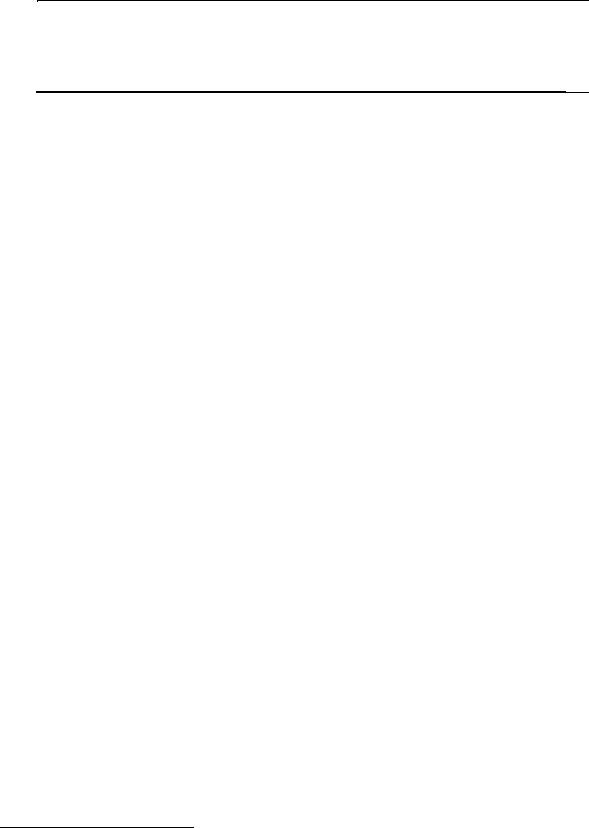
Note
You must use shielded cables for Infinet to ensure compliance with the Class A FCC limits and to provide reliable communications.
Cables that form Infinet are 24-gauge (.22 to .38 mm2), single-twisted-
pair, tinned, shielded copper wire. Use the following cables1 or their equivalents:
•Brand Rex # H 9002 (single-pair)
•Anixter # 9J2401021 (single-pair plenum cable)
The cable should have a nominal impedance of 100 Ω and a nominal velocity of propagation of 78%.
Capacitance of Infinet cable should be nominal, below 12.5 pF/ft (41 pF/ m) between conductors and below 22 pF/ft (72 pF/m) between the conductor connected to ground and the next conductor.
Lightning Protection
The LCX 898 has a 2 A, 500 V fuse and 1500 V transformer that isolates the unit.
The unit has 1500 V .01 μF spark gap caps from HOT and NEUTRAL to chassis ground. These help increase protection against power surges.
Lightning arrestors are required at each point where a bus cable enters or exits a building. Use the following arrestor:
Two pair gas tube arrestor, Andover Controls # 01-2100-299.
1. You can also use any cables you may already have in place for ACNET or LBUS.
4 |
LCX 890 Installation Guide |

Building Ground Requirements
Warning
Be sure that all hardware from Andover Controls Corporation is grounded to true earth ground. This kind of ground protects the equipment from transients and other power surges in the area.
We cannot guarantee that the controller system will operate as documented unless you properly ground all controllers.
Warning
Be sure to have your grounds inspected before you begin the installation process to be sure your municipality follows the National Electrical Code. Many municipalities do not and often have substandard electrical grounds.
An example of a substandard ground is a galvanized steel cold water pipe. As the pipe corrodes, it does not act as a true ground. The corrosion acts as an insulator, raising the potential of the pipe with respect to the ground.
When lightning strikes in the area of the installation, it drastically changes the potential of the earth. Since properly grounded Andover Controls units respond to changes in potential more rapidly than poorly grounded electrical systems, a poorly grounded building tries to reach ground through the Andover Controls system. The surge of current can destroy electronic components on the controller board.
Surges of much lower potential than lightning also impact the reliability of Andover Controls equipment.
LCX 890 Installation Guide |
5 |
Inspecting the Ground
You can check your ground as follows:
1.Check your ground by first inspecting the building power distribution panel for earth ground termination. If the ground termination is any of the following, it is not adequate and must be corrected:
•Does not exist.
•Is connected to a corroded or galvanized pipe.
•Is connected using a small gauge wire (less than 14 AWG
or 2.5 mm2).
2.Be sure your Andover Controls cabinet is connected to the ground with a copper conductor that terminates at the distribution panel.
Environmental Requirements
All LCX 890 controllers operate in rooms with temperatures ranging from 32 to 120°F and with humidity between 10 and 95%, noncondens-
ing. If you connect a SmartSensor, the temperature can range from 32 to 104°F.
The controller is in an Underwriter Laboratories approved enclosure. Do not remove the controller from the enclosure provided.
Output Requirements
The outputs on LCX 890 and 898 controllers are digital and can be wired to control lighting. To each output you attach either relays that give status feedback (Andover Controls Part # 01-0100-300) or relays that do not give status feedback (Andover Controls Part # 01-0100- 299).
All outputs are programmable. You may also wire a momentary switch to the light. This switch can be a motion detector or other occupancy sensor. When the motion detector or other sensor determines light is required, it sends a signal to the output relay. The relay mechanically
6 |
LCX 890 Installation Guide |
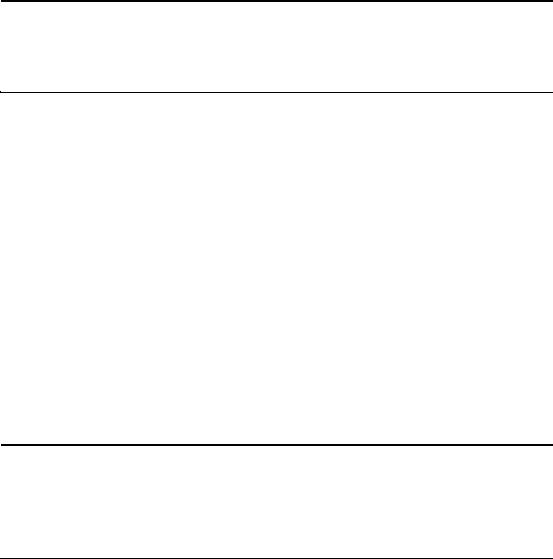
latches itself ON. The relay remains ON until you either set it to OFF from the software or the momentary switch sets it to off.
The status of the light is available in the software if you use relays that give feedback. In addition, the status light adjacent to each output lights up if the output is ON.
Each relay is rated for any of the following lighting loads:
Note
Andover Controls does not recommend switching DC loads. Switching DC loads can damage the relay.
•20 A with a Tungsten filament at 125 VAC
•20 A with a Ballast at 277 VAC
•20 A with Resistive element at 277 VAC
The motor load is 1/2 horsepower at 110 to 125 VAC or 1/2 horsepower at 220 to 227 VAC.
Andover Controls relays are prewired for the LCX 890 series of controllers and plug in to the 5-pin connector adjacent to each output.
LCX 898 outputs have 4,000 V noise immunity from IEC E801-4 and ANSI/IEEE C 62.41 5 ns/50 ns EFT test waveforms.
Input Requirements
Caution
Andover Controls inputs are designed to be used with two-wire devices and do not provide sufficient power to operate sensors requiring an external power supply.
The LCX 890 controllers each have two types of inputs, digital and universal. The paragraphs that follow give the requirements of each type of input.
LCX 890 Installation Guide |
7 |
Digital Inputs
The first 16 inputs on all LCX 890 controllers are digital, for switches. The controller can read the settings of these switches.
All digital inputs have an input impedance of 220KΩ referenced to 5.000 V.
Universal Inputs
The last eight inputs (not including the EMX 170 port) on the LCX 890 or LCX 898 (17 through 24) are universal. The last eight inputs on the are universal. Universal inputs are for any type of sensor, such as thermistors, motion sensors, and switches.
Below are the requirements of each universal input:
•Voltage Range—0 to 5.115 V
•Resolution—0.005 V
•Accuracy—+/–0.015 V
•Maximum Pulse Frequency—5 Hz at a duty cycle of 50% with a minimum pulse width of 100 ms
• Input Impedance—10K Ω referenced to 5.120 V
•Filtering—Corner Frequency at 15 Hz, –20 db/decade
•Over-Voltage Protection—24 VAC RMS or 24 VDC indefinitely on any single channel; +/–1500 V transient for 50 μs on all channels
•Calibration—Permanent (factory)
EMX 170 Inputs
If you have an EMX 170 on the EMX 170 port, it is an additional input, numbered 25.
8 |
LCX 890 Installation Guide |
Special Factors for Thermistors
You could connect a thermistor to one of the analog inputs. To keep thermistor errors minimal, lay out your site so you can limit the length of wire runs to the maximum for the gauge wire you select.
Table 1 shows the maximum runs for wires of various gauges to keep errors within .5°F, .25°F, and .10°F when sensing temperatures up to 70°F.
Table 1. Wire Gauges and Corresponding Maximum Runs for Sensing Temperatures Up to 70 °F
Gauge |
1/ ° F Error |
1/ |
4 |
° F Error |
1/ |
° F Error |
|
2 |
|
|
|
10 |
|
#14 |
26,700 ft |
13,300 ft |
|
5300 ft |
||
#16 |
16,800 ft |
|
8400 ft |
|
3300 ft |
|
#18 |
10,500 ft |
|
5200 ft |
|
2100 ft |
|
#20 |
6600 ft |
|
3300 ft |
|
1300 ft |
|
#22 |
4100 ft |
|
2000 ft |
|
800 ft |
|
|
|
|
|
|
|
|
Table 2 shows the maximum runs for wires of various gauges to keep errors minimal when sensing temperatures up to 100°F.
LCX 890 Installation Guide |
9 |

Table 2. Wire Gauges and Corresponding Maximum Runs for Sensing Temperatures Up to 100 °F
Gauge |
1/ ° F Error |
1/ |
° F Error |
1/ |
10 |
° F Error |
|
2 |
|
4 |
|
|
|
#14 |
12,700 ft |
|
6300 ft |
|
2500 ft |
|
#16 |
7900 ft |
|
3900 ft |
|
1500 ft |
|
#18 |
5000 ft |
|
2500 ft |
|
1000 ft |
|
#20 |
3100 ft |
|
1500 ft |
|
600 ft |
|
#22 |
1900 ft |
|
900 ft |
|
300 ft |
|
|
|
|
|
|
|
|
Table 3 shows the maximum runs for wires of various gauges to keep errors minimal when sensing temperatures up to 150°F.
Table 3. Wire Gauges and Corresponding Maximum Runs for Sensing Temperatures Up to 150 °F
Gauge |
1/ ° F Error |
1/ |
° F Error |
1/ |
10 |
° F Error |
|
2 |
|
4 |
|
|
|
#14 |
4100 ft |
|
2000 ft |
|
800 ft |
|
#16 |
2600 ft |
|
1300 ft |
|
500 ft |
|
#18 |
1600 ft |
|
800 ft |
|
300 ft |
|
#20 |
1000 ft |
|
500 ft |
|
|
200 ft |
#22 |
650 ft |
|
300 ft |
|
130 ft |
|
|
|
|
|
|
|
|
Table 4 shows the maximum runs for wires of various gauges to keep
errors within .28° C, .14° C, and .06° C when sensing temperatures up to 21° C.
Table 4. Wire Gauges and Corresponding Maximum Runs for Sensing Temperatures Up to 21 °C
Gauge |
.28° C Error |
.14° C Error |
.06° C Error |
|
|
|
|
2.5 mm2 |
8150 m |
4000 m |
1600 m |
10 |
LCX 890 Installation Guide |
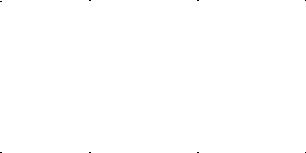
Gauge |
.28° C Error |
.14° C Error |
.06° C Error |
|
|
|
|
1.5 mm2 |
5100 m |
2500 m |
1000 m |
1.0 mm2 |
3200 m |
1600 m |
640 m |
0.5 mm2 |
2000 m |
1000 m |
400 m |
.35 mm2 |
1250 m |
600 m |
250 m |
LCX 890 Installation Guide |
11 |

Table 5 shows the maximum runs for wires of various gauges to keep errors minimal when sensing temperatures up to 38° C.
Table 5. Wire Gauges and Corresponding Maximum Runs for Sensing Temperatures Up to 38 °C
Gauge |
.28° C Error |
.14° C Error |
.06° C Error |
|
|
|
|
2.5 mm2 |
3800 m |
1900 m |
760 m |
1.5 mm2 |
2400 m |
1200 m |
450 m |
1.0 mm2 |
1500 m |
760 m |
300 m |
0.5 mm2 |
950 m |
450 m |
180 m |
.35 mm2 |
580 m |
275 m |
90 m |
Table 6 shows the maximum runs for wires of various gauges to keep errors minimal when sensing temperatures up to 65°C.
Table 6. Wire Gauges and Corresponding Maximum Runs for Sensing Temperatures Up to 65 °C
Gauge |
.28° C Error |
.14° C Error |
.06° C Error |
|
|
|
|
2.5 mm2 |
1250 m |
600 m |
240 m |
1.5 mm2 |
800 m |
400 m |
150 m |
1.0 mm2 |
500 m |
240 m |
90 m |
0.5 mm2 |
300 m |
150 m |
60 m |
.35 mm2 |
180 m |
90 m |
30 m |
12 |
LCX 890 Installation Guide |
